Resources & Links for Mental Health Treatment Illness
FSP Full Service Partnership
South Bay Los Angeles CA
Find
free or reduced cost services like medical care, food, job training, and more.
#Aunt Bertha.com
free or reduced cost services like medical care, food, job training, and more.
California Corona Virus Response
- Get the latest information on COVID-19 including county data, stay at home order updates and essential resources at https://covid19.ca.gov
- Emergency food and food benefits Get help buying groceries with the NEW Pandemic EBT (or P-EBT) card: With schools closed due to COVID-19, children who are eligible for free or reduced-price meals can get up to $365 in food benefits. Families with children who are eligible for free or reduced-price meals AND do not participate in CalFresh, Medi-Cal, or Foster Care can apply starting May 22nd – June 30th. For more informationhttps://ca.p-ebt.org or : www.cdss.ca.gov/home/pandemic-ebt.
- California began allowing online food purchasing with EBT benefits! You may use your EBT card on Amazon and/or Walmart to purchase groceries. More retailers to be added in the future. For more information https://www.cdss.ca.gov/ebt-online
Family Services
- Childcare for essential workers: New portal enables parents to enter their location and the type of care needed, instantly receiving a list of local center-based and family childcare programs. Available at covid19.ca.gov/childcare
- The “Meals for Kids” interactive map directs people to local sites where kids can get free meals. The map is available in both English and Spanish at www.fns.usda.gov/meals4kids.
24/7 Hotlines
Dial 2-1-1 from a cell phone or landline to get connected to local resources, it will ask for zip code and give a list of options.
Dial 988 for Mental Health Emergencies starting July 2022 Calif Health Line 1.2021 *
Resources & Links
We are in the process of updating this page. If you find any links that would be helpful to other website visitors, please put them in the comments section below.
I’m no longer really maintaining this page. Try
- nami south bay.com
- Paul Stansbury (310) 892-8046 (310) 533-0705 [email protected]
- Mental Health Resources Los Angeles Times – July 15th 2021
Federal Government & National Resources
- Substance Abuse and Mental Health Services Administration (SAMSA)
- Americans with Disabilities Act (ADA)
- Titles I and V of the ADA EEOC.Gov
- eeoc.gov
- Minimum wages for workers with disabilities
- disability rights ca.org/
- Bazelon Center for Mental Health Law
- Mental Health is NOW a mandated Essential Benefit under Health Care Reform
- latimes.com/stephen-hawking-disability-rights
- CA Dept. of Developmental Services
- Eligibility Criteria Regional Centers Los Angeles Zip Code Lookup
- Board of Behavioral Services – State of CA
- DGS Prepare for Special Education Hearing
- Gov. Newsom’s #CARE Court proposal 4.4.2022 Community Assistance Recovery and Empowerment Court
- Newsom wants $65 million to set up California mental health courts Sacramento Bee 5.13.2022
- chhs.ca.gov/care-court
- Op-Ed: The mentally ill defendants in my courtroom need treatment, not jail LA Times 5.20.2022
- gov.ca.gov/Fact-Sheet_-CARE-Court
- Editorial: Improve mental health care before forcing it on people LA Times 8.7.2020
- debate over ‘involuntary treatment’ Capital weekly 5.18.2022
- See Laura’s Law
- Harbor Regional Center
- Medi Cal
- Ventura County Guide to Medi-Cal Mental Health Services
- Los Angeles Guide to Mental Health
- Jewish Services
- HaMercaz A Community of Support for Families Raising Children with Special Needs The Federation’s HaMercaz program offers ongoing assistance, advocacy, and support for Jewish families and children with special needs and developmental disabilities such as autism spectrum disorder, Asperger syndrome, and cerebral palsy, from birth to age 22. Ha mercaz means “the center” in Hebrew.
- Los Angeles County Dept. of Mental Health
- ACCESS Access to Community Care, Effective Services & Support
- Didi Hirsch – Warmline 855 952 9276 A warmline is a confidential overnight telephone support service for anyone who is struggling with loneliness, anxiety, substance use or other mental health concerns, or anyone who needs information about available mental health services.
- Mental Health & Homeless
- Outreach for Harbor Area – 1 page from San Pedro Mental Health
-
150 W 7th St, San Pedro, CA 90731
-
Phone: (310) 519-6100
- al-anon.org/
- nar-anon.org/
- coda.org/ Co Dependents Anonymous
- nami.org
- St. Dymphna, patron saint of mental health LA Times May 14, 2022
- Homes For Life.org/ Los Angeles County HFLF is dedicated to establishing a network of permanent, affordable, service-enriched housing within the geographic boundaries of Los Angeles County for individuals who suffer from mental disabilities, those who are homeless or at imminent risk of becoming homeless.
- Los Angeles Listing of Board & Care 37 pages pdf
- NAMI West LA Listing
- American Residential Treatment Assoc.
- AB 977 AB 27 will invest billions in building up an infrastructure of more than 44,000 new housing units and treatment beds for people exiting homelessness, officials said, including $5.8 billion to add more than 35,000 new housing units through the state’s Project Homekey program.
- $3 billion will be allotted to house people with acute behavioral and physical health needs while creating 22,000 new beds and treatment slots. mercurynews.com/2021/09/30/in-la-gov-newsom-signs-bills-aiming-to-bolster-mental-health-care-ease-homelessness/
- ENRICHED RESIDENTIAL CARE PROGRAM LA County DMH.gov
- placement of clients who require 24/7 care and supervision into licensed residential facilities in order to help them remain stably housed. Licensed residential facilities, which include Adult Residential Facilities and Residential Care Facilities for the Elderly (commonly known as Board and Cares), can be an especially critical housing resource for LACDMH clients who are homeless, leaving an institution such as a hospital or a Institute for Mental Disease, on conservatorship or at risk of becoming homeless due to the need for a higher level of care.
- Pacific Hospital in Long Beach
- Del Amo Hospital
- Patton State Hospital
- River Community Hospital – Azusa, CA – Dual Diagnosis
MISC
- Black Sheep of Family
- Senior Citizens Legal Hotline senior legal hot ine.org 551-2140; 800-222-1753
- “Special Needs? Answer’s.com”
- Mortgage Loan.com on buying a home for people with Disabilities.
- WebMD.com
- Mood Buster Matching Game
- Suicide Info.
- Law Help.org connecting justice communities.com Mental Health Disability & Mental Health
- 309.28 Adjustment Disorder with Mixed Anxiety and Depressed Mood
- More housing funds
Get a term life quote here,
to protect your loved one
What is Independent Living?
- PasadenaVilla.com How young adults with mental problems can transition to Independent Living
- In order for an individual to be able to live on his own successfully, he will need to be able to take care of his personal needs – dressing, eating, hygiene – as well as manage simple household chores such as the laundry and grocery shopping. Decisions must also be made when dealing with financial matters such as paying bills and managing a bank account, tasks which a young adult with a mental disability may not have experience of but which are all necessary if he wants to live independently.
- NAMI on securing stable housing
#Medicare & You - Mental Health

- Medicare & Mental Illness Publication # 10184
- Find therapists who accept Medicare Assignment
- Medicare Billing Etc Guidelines for Professionals
- Our Webpage on Medicare & Mental Health
- Mental Health
- Medicare.Gov on Mental Health
- EOC Evidence of Coverage - Plain English,
- Los Angeles Consumer Resources #Directory
- Los Angeles Times on low cost & free therapy alternatives
- NPR Mental Health & COVID
- Guide to Mental Health Benefits (The Mighty)
 Compliance Assistance Guide from DOL.Gov Health Benefits under Federal Law
Compliance Assistance Guide from DOL.Gov Health Benefits under Federal Law
- Mental Health Videos
- Veteran's Mental Health
- CMS Learning Aid for Mental Health Professionals
Mental Health - Related Pages
- Mental Health – ACA/Health Reform Mandated Essential Benefit
- Autism – Essential Benefits & Health Coverage
- Resources – Mental Health – Conservatorship – FSP
- Therapist find one who takes Medicare – ACA – Blue Shield
- Medicare & Mental Health
- Find Resources – Aunt Bertha
- FSP Full Service Partnership
- Laura’s Law
- Lanterman LPS Conservatorships
- §1370 Murphy Conservatorship
Medi-Cal Managed Care HMO – Health Care Options
Here you can review and choose the HMO that you want to deliver your Medi-Cal health Care.
Learn more:
- Disability Rights.org –
- What are Medi Cal Managed Care Plans? What do I need to know?
- Medi-Cal Managed Care Health Plan Directory
- Medi-Cal Listing of HMO plans by county *
- Medi-Cal Managed Care Provider Search
- Medi Cal HMO – Managed Care Providers by County
- health care options.dhcs.ca.gov/tips-help-you-choose-medical-plan
- health care options.dhcs.ca.gov/frequently-asked-questions-faqs
- California’s County-Based Health Plans 2022 CHCF
- Medi-Cal’s Fragmented System Can Make Moving a Nightmare Read More CA Health Line *
- Poor Care Co-Ordination? New contracting process Deficient Oversight CA Health Line *
- Disability Rights – Medi Cal provider HMO’s, what are they? What do I need to know about them?
- Medi-Cal Managed Care – Health Care Options
- EOC’s, Forms & Income Charts from Insure Me Kevin.com
- Sacramento? dhcs.ca.gov//mmcd health plan dir
- Battle Lines Are Drawn Over California Deal With Kaiser Permanente
- Exemption from enrolling in a Health Care Plan
- health care options.dhcs.ca.gov - Download Forms
- You May Get A Medical Exemption If:
- You have a complex medical condition; AND
- The care you get from your Regular Medi-Cal doctor for the complex medical condition cannot be changed, because your condition could get worse; AND
- Your Regular Medi-Cal doctor is NOT part of a plan in your county. You may see more than one Regular Medi-Cal doctor. If you do, have the form filled out by the doctor who sees you most often. Ask your Regular Medi-Cal doctor if he or she is part of a Plan in your county. This should be done before you submit this form.
- You have a complex medical condition; AND
- Provider Search – Statewide Fee for Service
- See our webpage on IMR Independent Medical Review
Conservatorships – Power of Attorney
Lanterman-Petris-Short (#LPS)
Conservatorships
LPS conservatorships are used to care for adults with serious mental health illnesses who need special care.
These conservatorships are used for people who usually need very restrictive living arrangements (like living in locked facilities) and require extensive mental health treatment (like very powerful drugs to control behavior). Welfare & Institutions Code 5000-et seq
Conservatees in LPS conservatorships cannot or will not agree to the special living arrangements or treatment on their own. LPS conservatorships must be started by a local government agency. courts.ca.gov
The Act in effect ended all hospital commitments by the judiciary system, except in the case of criminal sentencing, e.g., convicted sexual offenders, and those who were “gravely disabled“, defined as unable to obtain food, clothing, or housing CA Jury Instruction 2002 * psycheteria.org * [Conservatorship of Susan T.]. It did not, however, impede the right of voluntary commitments. It expanded the evaluative power of psychiatrists and created provisions and criteria for holds. Wiki Pedia
#Gravely Disabled
What exactly is it?
Definition? Criteria?
The statutory definition of commitment for grave disability is:
- “a condition in which a person, as a result of a mental disorder, is unable to provide for his basic personal needs, for food, clothing, or shelter.’ CAL. WELl. & INST. CODE § 5008(h) 5250
- “a finding of imminent danger as evidenced by a recent overt act, attempt or threat,” CA Civil Jury Instructions 4002 * Capacity Declaration GC 335 * Grave Disability Includes Financial & Health Issues
Be sure to check out our main page on Conservatorship for an introduction
Grave disability
The LPS Lanterman Petris Short act, defines grave disability is defined with three seemingly simple reasons – criteria:
- Inability to provide for
- Cannot distinguish between food and non food
- Endangers health by gross negligence in needed diet and nutrition
- Begging or stealing food
- Eating out of refuse or garbage cans
- Ordering meals at restaurants without having funds
- Demonstrates excessive and consistent food preferences or aversions which endanger health (except for genuine religious reasons)
- Having spoiled food in refrigerator or no food for a lengthy period of time in the house
- Engaging in public nudity or “unthinking” exhibitionism
- Engaging in bizarre style of dressing that does would be apt to lead to social difficulties (if not used by social group or personal preferences)
- Wearing filthy or soiled clothes with lack of recognition of personal hygiene problem
- Wearing disheveled clothes for prolonged period of time
- Leading a nomadic existence with an inability to establish stable community living, including living in the streets or other public places
- Unable to locate housing and make the appropriate arrangements with an inability to ask for or accept assistance in doing so
- Unable to manage his or her household in such a way as to avoid clear dangers to health
- Presence in household of filthy conditions) fire hazards that the person cannot correct, vermin infestations, and lack of bathing and toilet facilities
- Resists leaving residence even if evicted or the residence is sold
- Hoarding nonsensical items while misplacing necessary items
Financial incompetence
- Unable to earn an income and unable to avail himself of financial assistance from public or private agencies
- Completely dependent on family or friends to provide financial assistance for basic personal needs
- Has funds but no longer knows or understands the location and/or extent of them
- Refusing to expend funds to the extent of endangering personal health and/or safety
- Has no funds and does not see this as a problem
- Grossly and inappropriately expends funds needed for basic personal needs
- Has untrue beliefs as to having extensive money or property
- Mismanages funds so that rent and utility bills remain unpaid
- Unable to accept inability or loss of ability to understand complex financial matters leaving him vulnerable to manipulation by unscrupulous individuals
Incompetence in regard to health
- Unable or unwilling to follow medical instruction regarding treatment and self care which are essential to health
- Loss of weight or other evidence of malnutrition due to not eating or lack of proper food
- Wanders away from residence and becomes lost frequently without recognition of the seriousness of the problem
- Failure to adjust in the community
- Involved in frequent confrontations with family members or neighbors involving abusive, threatening, or assaultive behavior
- Engages frequently in disruptive, destructive acts in the home or neighborhood, possibly leading to threatened or actual eviction
- Engages in bizarre or other behavior which may be self-endangering and/or a threat to others requiring police intervention Jewish Family Service Summary
Though these criteria may seem simple, they aren’t. For example, just because someone is mentally ill and homeless does not mean that they are gravely disabled. If they can provide a reasonable, executable plan for where they would stay or if they are stable being homeless, then they do not meet LPS criteria. If, on the other hand, they are homeless in a location in which their life or health is often in jeopardy and, as a result of mental illness, they do not comprehend this, then they likely are gravely disabled.
These issues achieve marked salience in hearings for 5250‘s in which the argument is made that someone is gravely disabled. It is often helpful to identify which underlying issues lead you to the conclusion rather than requiring the hearing officer to identify the issues. If someone is gravely disabled for an extended period of time, they can be placed on an LPS conservatorship. Note, however, that there are So, below are examples of states or conditions that have been upheld as evidence of grave disability. Note that they extend beyond a simplistic definition relating to food, clothing, and shelter. That is, there are a variety of ways one can demonstrate incompetence in these areas.
***********
the Court, in Addington v. Texas, held that the need for civil commitment must be provided by clear and convincing evidence. In the Lanterman-Petris-Short Act (LPS), the legislature opted to reduce long-term confinement of the mentally ill. “habeas corpus” meaning literally “that you have the body”)[1] is a recourse in law through which a person can report an unlawful detention or imprisonment to a court and request that the court order the custodian of the person, usually a prison official, to bring the prisoner to court, to determine whether the detention is lawful.[2]
Conservatorship of Roulet – Proof beyond a reasonable doubt
Parham (Test) v J.R. 442 US 584 1979 Gravely Disabled vs dangerous to self and others? The court in Doe I held that the grave disability term was sufficiently precise. The court found that grave disability implicitly required a finding of harm to oneself, i.e. an inability to provide for one’s basic physical needs, and therefore met the constitutional requirement of dangerousness. The right to choose and practice a particular life style is protected by the first amendment rights of association, assembly, and free expression Law.SCU.Edu Written 1.1982 *
Case Law
if nothing else, the background information is an interesting story.
- Kanuri Surgury QAWI, on Habeas Corpus Conservatorship of Carol K. Conservatorship of the Person and Estate of JESSE G HTML
- Conservatorship of Chambers
- Conservatorship of Davis (1981)
- Conservatorship of Smith (1986)
- Conservatorship of K.W.
Get a term life quote here,
to protect your loved one
Consumer Guide to LPS #Lanterman Act
#Rights for Individuals in Mental Health Facilities
- Mental Health [email protected]
- disability rights ca.org
- Handbook to Challenge Mental Health Conservatorships -
- H E L P I N G Y O U R L O V E D O N E a family guide to conservatorship and involuntary treatment
#Probate Conservatorships
Bibliography, Links & Resources
- courts.ca.gov/selfhelp-conservatorship
- With Heart: Understanding Conservatorship VIDEO
- canhr.org/Probate Conservatorship
- dmh.lacounty.gov/conservatorship
- bet tzedek.orgConservator Guide 74 pages
#Power of Attorney
Bibliography, Resources & Links
- a peoples choice.com/difference-between-power-of-attorney-and-conservatorship
- jaci law.com/power-attorney-vs-conservatorship
- Get Standard - Statutory Forms
Disorders
Substance Abuse & Mental Illness
Dual Diagnosis – Double Trudger’s
- california healthline.org new-california-law-makes-it-easier-to-get-care-for-mental-health-and-substance-abuse
- Medi Cal – Expanded Substance Abuse & Access to Care CHCF.org
- CA Health Line New CA law makes it easier to get care for Mental Health & substance abuse
- Analysis of SB 855 Mental Health or Substance Abuse Disorders 104 pages
- Drugs Rehab.org
- Jewish Drug & Alcohol Recovery
- Chabad Rehab Center 323.965.1365 on Olympic between Fairfax & La Brea
- beitt shuvah la.org/
- Is alcoholism or addiction ever “cured” or do you have to go to meetings forever?
- The Ness Center.org The NESS Counseling Center, Inc. is a non-profit, non-sectarian community based outpatient counseling service agency that provides a full range of life enhancing services, including, but not limited to, individual and family counseling, drug and alcohol treatment (DEJ, PC1000 and PROP 36) programs, drug assessments and testing, paternity testing, parenting classes, monitored child, exchange and visitation, domestic violence/anger management group sessions, and hate crime educational classes in the greater Los Angeles area.
- Beacon House Association San Pedro, CA
- The Village – Long Beach
- Pacifica House
- California Association of Alcohol & Drug Counselors
- Smart Recovery.org
- Rational.org
- Moderation.org
- Sober Recovery.com
- Hospital List in South Bay
- recover la.org
- 3 convicted in $20M California drug treatment fraud scheme
Delusional Disorder
- Wikipedia on delusional disorder
- Mental Health.org of New Zealand
- What Causes Psychotic Disorders?
- The exact cause of psychotic disorders is not known, but researchers believe that many factors may play a role. Some psychotic disorders tend to run in families, suggesting that the tendency, or likelihood, to develop the disorder may be inherited. Environmental factors may also play a role in their development, including stress, drug abuse and major life changes.
- These disorders most often first appear when a person is in his or her late teens, 20s or 30s.
- The exact cause of psychotic disorders is not known, but researchers believe that many factors may play a role. Some psychotic disorders tend to run in families, suggesting that the tendency, or likelihood, to develop the disorder may be inherited. Environmental factors may also play a role in their development, including stress, drug abuse and major life changes.
Bi-Polar
All our plans are Guaranteed Issue with No Pre X Clause
Quote & Subsidy #Calculation
There is No charge for our complementary services
Watch our 10 minute VIDEO
that explains everything about getting a quote
- Our Quote Engine Takes all the complexity out of using pencil and paper to figure out the premiums per the Obamacare/ACA rules under CFR §1.36B-3 *
- Get more detail on the Individual & Family Carriers available in CA
Schizophrenia
- Booklet NIH
- nimh.nih.gov/schizophrenia
- web md.com/schizophrenia/
- Living With Schizophrenia
- Through research, many advances have been made in improving lives of people struggling with schizophrenia. This article puts it in perspective. Coping With Stigma of Mental Illness
- Though society is more accepting, mental illness can still carry a stigma. Here are steps to help you cope.
Schizophrenia Outlook: A Time for Hope - With new medications and research, this is a time for hope. Read about three predictors that help determine how well a person will do. Schizophrenia Disability Laws
- NIMH – National Institute of Mental Health 8 page Schizophrenia booklett
Intermittent Explosive Disorder
- allpsych.com/
- mayhem.net
FSP Full Service Partnership
What is an #FSP?
Full Service Partnership
An FSP is a Full Service Partnership is “the collaborative relationship between the County and the client, and when appropriate the client’s family, through which the County plans for and provides the full spectrum of community services so that the client can achieve the identified goals.”
Adult Full Service Partnership (FSP) programs are:
designed for adults ages 26-59 who have been diagnosed with a severe mental illness and would benefit from an intensive service program. The foundation of Full Service Partnerships is doing “whatever it takes” to help individuals on their path to recovery and wellness. Full Service Partnerships embrace client driven services and supports with each client choosing services based on individual needs. Unique to FSP programs are a low staff to client ratio, a 24/7 crisis availability and a team approach that is a partnership between mental health staff and consumers.
Adult FSP programs assist with housing, employment and education in addition to providing mental health services and integrated treatment for individuals who have a co-occurring mental health and substance abuse disorder. Services can be provided to individuals in their homes, the community and other locations. Peer and caregiver support groups are available.
Jail, Prison, Incarceration
Psychological Services in Jails & Prisons
- Federal Bureau of Prisons
MDC Federal Administrative Facility Los Angeles - ACLU Understanding LA County Jails
ACLU Prisoner Rights
Prisoners with Children
Jewish Prisoner Social Services – Aleph Institute - Jewish Prisoner Services.org
- How to Navigate California County Jails: A Guide for Inmates and Their Loved Ones
Educational Opportunities for the Incarcerated
- “If we never change criminal thinking, we will never change criminal behavior.”
You can print out this list of our inmate correspondence courses. - .Ohio University College for the Incarcerated
- propublica.org/how-to-navigate-california-county-jails-inmates-loved-ones-guide
Medical Services
- ACLU Prisoners Medical Rights pdf
- Cost increase in prisons – Health Care CA Health Line 1.7.2016
- Twin Towers Los Angeles County
- Latest Information on Prisoner Status
Mail Regulations
Inmate Medication Form
Mental Illness Information - More Mentally Ill in Jails than Hospitals E. Fuller Torrey MD 22 pages pdf
- Jail not the place for the mentally ill aclu socal.org
- treatment advocacy center.org
- “Do no harm” or “Do no expense”?
- International Law and Prisoner Health
- Severe Mental Illness AB 88 California
- Psychology Online
- Forensic Psychiciatry Web Site – Dr. Reid
- comprehensive guide to forensic psychiatry
- the U.S. Supreme Court ruled in Estelle v. Gamble [Wikipedia] that ignoring a prisoner’s serious medical needs can amount to cruel and unusual punishment, noting that “[a]n inmate must rely on prison authorities to treat his medical needs; if the authorities fail to do so, those needs ACLU
- nami illinois.org/when person with mental illness goes to prison 60 page pdf
- Treatment, not Jail
- Jailing People with Mental Illness
- Publications
Get a term life quote here,
to protect your loved one
InsuBuy International Medical Coverage –
Instant Quotes & Enrollment
Coverage for Travel - $50k Emergency under Medicare Medi Gap or MAPD Advantage may not be enough!
Laura’s Law
#LAURA ’s Law
Laura’s Law allows courts to order certain historically violent, dangerous, or incarcerated individuals to accept treatment as a condition of living in the community. To be eligible individuals must have a serious mental illness that causes them to be unlikely to survive safely in the community without supervision, and been in a hospital, prison or jail at least twice within the last thirty-six months; or involved in acts, attempts or threats of serious violent behavior toward self or others within the last forty-eight months.
Learn More ==>
- Report: Laura’s Law Works for Mentally Ill Los Angelenos
- Huffington Post Summary 12.16.2011
- latimes.com/
- en.wikipedia.org
- Los Angeles County Department of Mental Health – Implementation 3 pages
- Outreach & Engagement
- [email protected] or (213) 738-2440
- LAPD
- Welfare & Institutions Code §5348 et seq
- Court Services for mentally ill who get involved in Criminal Cases – Mental Health Court Linkage Program
- See CARE Proposals
Brother - Sister - Sibling Side Pages Subpages
View our website with your Desktop or Tablet for the most information
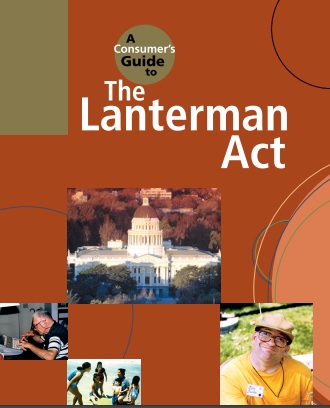

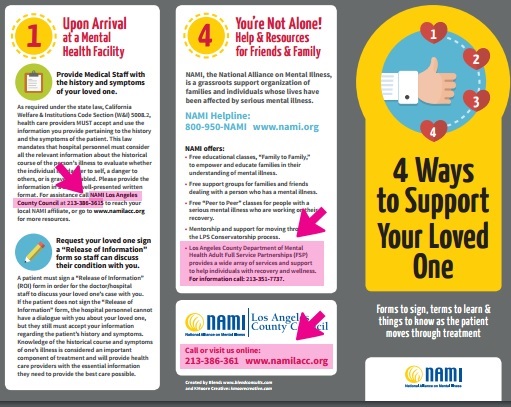
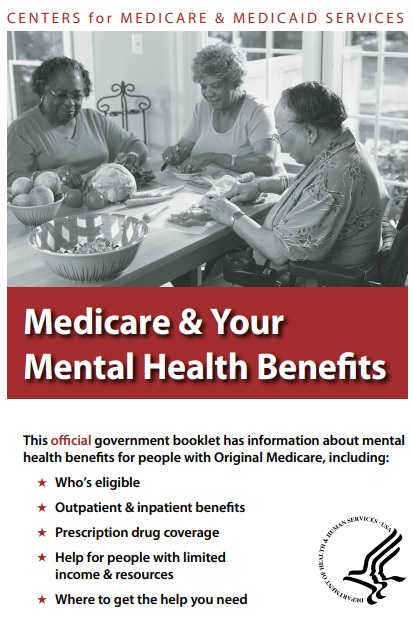
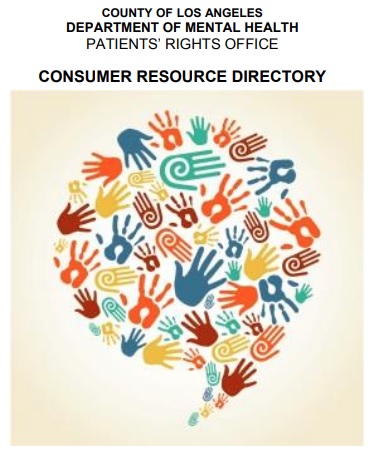

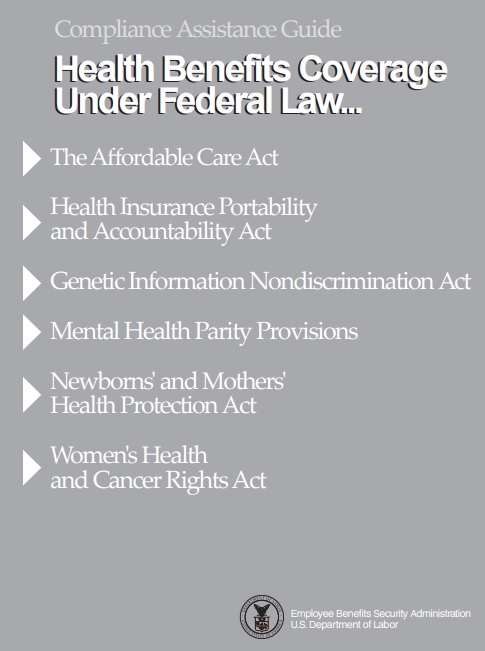
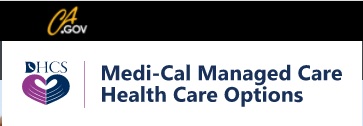


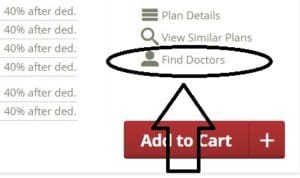
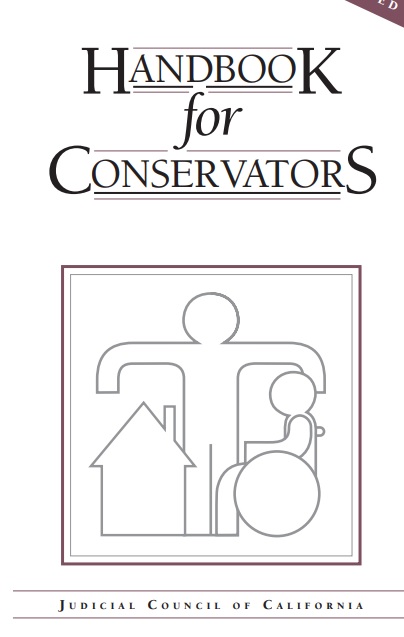
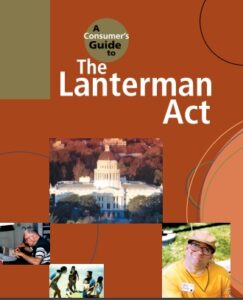


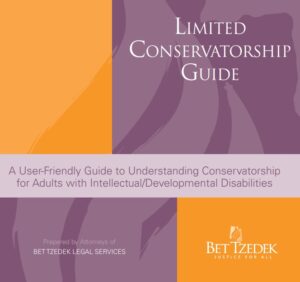

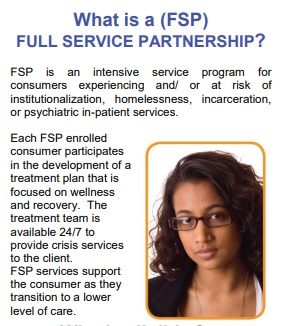


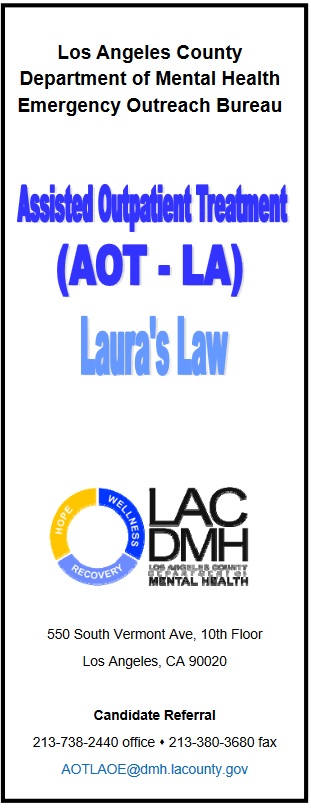
The National Provider Identifier Registry is a free public search directory managed by the US federal government. All active NPI records can be accessed through the registry by any individual. Information including the provider’s role, NPI number, and primary practice address will be displayed in the NPI.
The information in the NPI database is typically updated manually or if you apply for another number. (Note: Individual providers can only have NPI, but organization providers may apply for multiple NPIs).
It will not update automatically. So, if you get a new state license or leave a residency or fellowship, “it” will not know. Like LinkedIn, providers need to edit their profile to keep it up-to-date.
An NPI number is entirely distinct from a provider’s license number and serves a different purpose. The license number is assigned by the state governmental agency that regulates the healthcare provider. However, a provider’s license number is included in the NPI registry.
Yes. If you want your NPI profile to reflect your new licensure, you must log into the NPI database and input it yourself. Given the importance of NPI to operating as a health care provider, most providers are recommended to input their new information into the NPI registry immediately.
Find local support options – https://startyourrecovery.org/treatment/rehab-centers/california/los-angeles
5150 Detention Manual
https://www.sfdph.org/dph/files/CBHSdocs/Involuntary_Detention_Manual_April2020.pdf
https://www.latimes.com/california/story/2024-11-02/fountain-house
https://www.latimes.com/california/story/2022-09-22/mental-health-resources-to-help-yourself-or-anyone-else-how-to-save-a-life
https://khn.org/news/article/state-institutions-closures-families-disabilities-iowa/
https://revcycleintelligence.com/news/expanding-substance-use-disorder-coverage-would-cost-medicare-362m
https://medcitynews.com/2022/08/cost-of-adding-substance-use-disorder-coverage-to-medicare-would-be-slim-report-finds/
https://www.fiercehealthcare.com/payers/study-costs-add-substance-abuse-coverage-medicare-only-increase-spending-nominal-amount
https://dmh.lacounty.gov/ 1 800 854 7771
WDACS is a comprehensive community resource that provides personal, social, and economic services for residents and businesses. We provide equitable opportunities for all of LA County to grow, succeed and thrive. https://wdacs.lacounty.gov/
https://khn.org/news/article/librarians-workplace-changing-social-work/
https://khn.org/news/article/social-media-posts-criticize-988-suicide-hotline-calling-police/
https://www.ems1.com/communications-dispatch/articles/the-fourth-911-option-mental-health-services-zsPESRMBXRo1XqaZ/
https://khn.org/morning-breakout/federal-judge-finds-walgreens-likely-worsened-san-francisco-opioid-crisis/
The NAMI HelpLine can be reached Monday through Friday, 10 a.m. – 10 p.m., ET.
Call 1-800-950-NAMI (6264), text “HelpLine” to 62640 or email us at [email protected]
https://www.nami.org/help
https://www.dhcs.ca.gov/CalAIM/Pages/Transforming-Behavioral-Health.aspx
https://www.dhcs.ca.gov/Pages/BH-CalAIM-Webpage.aspx
https://www.latimes.com/opinion/story/2022-07-18/jails-mental-health-los-angeles-county-diversion
https://www.nytimes.com/2022/07/22/opinion/ezra-klein-podcast-thomas-insel.html
https://www.fiercehealthcare.com/regulatory/everything-know-launch-new-suicide-prevention-hotline
https://www.npr.org/sections/health-shots/2022/07/15/1111316589/988-suicide-hotline-number
https://www.kqed.org/news/11919553/a-new-mental-health-crisis-line-launches-on-saturday-is-california-ready-to-operate-it
https://www.latimes.com/about/pressreleases/story/2022-07-13/l-a-times-launches-year-long-mental-health-initiative
L.A. losing homes for adults with serious mental illness
https://khn.org/morning-breakout/1-in-6-calls-to-suicide-prevention-line-go-unanswered/
https://www.latimes.com/california/story/2022-07-11/new-book-links-homelessness-city-prosperity
https://inewsource.org/2022/07/07/help-conservatorships-reporting/
https://www.latimes.com/california/story/2022-05-20/given-chance-to-avoid-jail-and-criminal-charges-mentally-ill-addicted-and-homeless-people-in-l-a-pass
California parents could soon sue for social media addiction
Less Than 5% of Violent Acts Are Linked to Mental Illness, Research Shows
https://www.kff.org/medicare/issue-brief/faqs-on-mental-health-and-substance-use-disorder-coverage-in-medicare/
https://www.latimes.com/opinion/story/2022-06-14/mental-health-awareness-dsm-diagnoses
https://www.latimes.com/opinion/story/2022-06-18/mental-health-hotline-suicide-988
https://www.statnews.com/2022/06/22/to-protect-people-with-addiction-from-discrimination-the-justice-dept-turns-to-a-long-overlooked-tool-the-ada/
https://www.dhcs.ca.gov/Documents/BHIN-22-011-No-Wrong-Door-for-Mental-Health-Services-Policy.pdf
https://www.mercurynews.com/2022/05/16/long-awaited-bay-area-homelessness-numbers-show-a-worsening-crisis/
https://tradeoffs.org/2022/04/28/medical-respite-homelessness/
Is alcoholism or addiction ever “cured” or do you have to go to meetings forever?
AA preaches) that an addict is never cured. In your view, an addict is forever “recovering.”
Once you quit, you’re not an addict. You’re an ex-addict.
An “ex-addict,” not a “recovering addict.” It is OVER. Why saddle ourselves with the gloomy proposition of forever having to look over our shoulders for triggers, temptation, pending relapse. Once we see that drugs never gave us anything, nothing at all, and that drugs have absolutely nothing to offer us in the future, we are done.
If support groups help, great. If a “sponsor” helps, super. If counseling counsels, right on. We certainly must nurture our physical and spiritual selves for the remainder of our days. But to constantly be adding up the days, months, and years, waiting until enough time has passed before we are free seems so daunting to users that they won’t even attempt to quit for fear of the lifetime of “battle.”
Reply *******************
there is one that is common to all alcoholics and drug addicts—and that is loss of control. At some point a person will lose the ability to control their use. Whether they are daily users or binge users, the common thread is—once they start using they cannot control how much or when to stop.
I, in the past thirty-three years, have never seen an addict regain control of their use—to become a social-occasional user.
So I believe that if I were to tell someone they are cured, they may think they no longer have a problem. That opens the door to another attempt at social use—which NEVER turns out well.
The way I explain it to people is to think of it like cancer. There is no cure for cancer but cancer often goes into remission after treatment. It does not mean they have been cured or that a cure has taken place. It’s still there but it’s in remission.
Personally, I have not used anything since 1977—but I’m not cured. My disease is in remission. If I were to choose to try to drink occasionally or socially I would bring my disease out of remission and very soon it would again cause lots of problems.
I don’t tell people they “have to go to lots of meetings for the rest of their life.” Each person will have to decide for his or herself—how much involvement they need to stay sober and how often they should attend support groups.
https://drug-addiction-help-now.org/is-an-addict-ever-cured/
The 12 steps are so deeply ingrained in the United States that many people, including doctors and therapists, believe attending meetings, earning one’s sobriety chips, and never taking another sip of alcohol is the only way to get better. Hospitals, outpatient clinics, and rehab centers use the 12 steps as the basis for treatment.
Affordable Care Act, which requires all insurers and state Medicaid programs to pay for alcohol- and substance-abuse treatment, extending coverage to 32 million Americans who did not previously have it and providing a higher level of coverage for an additional 30 million.
The program instructs members to surrender their ego, accept that they are “powerless” over booze, make amends to those they’ve wronged, and pray.
Based on these data, he put AA’s actual success rate somewhere between 5 and 8 percent.
Why do we assume they failed the program, rather than that the program failed them?
People with alcohol problems also suffer from higher-than-normal rates of mental-health issues, and research has shown that treating depression and anxiety with medication can reduce drinking.
AA truisms have so infiltrated our culture that many people believe heavy drinkers cannot recover before they “hit bottom.” Researchers I’ve talked with say that’s akin to offering antidepressants only to those who have attempted suicide, or prescribing insulin only after a patient has lapsed into a diabetic coma. “You might as well tell a guy who weighs 250 pounds and has untreated hypertension and cholesterol of 300, ‘Don’t exercise, keep eating fast food, and we’ll give you a triple bypass when you have a heart attack,’ ” Mark Willenbring, a psychiatrist in St. Paul and a former director of treatment and recovery research at the National Institute on Alcohol Abuse and Alcoholism, told me. He threw up his hands. “Absurd.”
https://en.wikipedia.org/wiki/The_Lost_Weekend_(film)
In 1976, for instance, the Rand Corporation released a study of more than 2,000 men who had been patients at 44 different NIAAA-funded treatment centers. The report noted that 18 months after treatment, 22 percent of the men were drinking moderately. The authors concluded that it was possible for some alcohol-dependent men to return to controlled drinking.
The problem is that nothing about the 12-step approach draws on modern science: not the character building, not the tough love, not even the standard 28-day rehab stay.
Over time, though, the brain of a heavy drinker adjusts to the steady flow of alcohol by producing less gaba and more glutamate, resulting in anxiety and irritability. Dopamine production also slows, and the person gets less pleasure out of everyday things. Combined, these changes gradually bring about a crucial shift: instead of drinking to feel good, the person ends up drinking to avoid feeling bad.
half of a person’s vulnerability to alcohol-use disorder is hereditary, and that anxiety, depression, and environment… —also play a role.
research has found that having a drink or two a day could reduce the risk of heart disease, dementia, and diabetes.
https://www.theatlantic.com/magazine/archive/2015/04/the-irrationality-of-alcoholics-anonymous/386255/